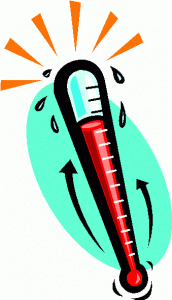This is a guest post from Jon Geller, DVM, an emergency veterinarian in Colorado:
 Many emergency veterinarians enjoy the challenge of saving an injured pet in a gunshot wound case, especially when we have a good outcome.
Many emergency veterinarians enjoy the challenge of saving an injured pet in a gunshot wound case, especially when we have a good outcome.
It’s not very often however, that a dog comes into our ER in critical condition from a gunshot wound and survives and the dog’s owner ends up dead from the very same gun a short time later.
However, that is exactly what happened on the afternoon of November 2, 2003 and here is the sad tale that unfolded in our ER.
Mojo was a 3 year old Miniature Pinscher, but did not deserve the “land shark” label that many of these MinPins end up with, as he normally was affectionate and friendly. He did like to bark, however, and that tendency would end up leading to a tragic end for his owner because of it.
Mojo arrived at our emergency room with his owners Diane and Richard who rushed him in after he’d been found collapsed in their yard, struggling to breath.
When he arrived his gums were pale and he had a wound on the left side of his chest. After we gave him oxygen to help him breathe, a quick XRay showed two bullets lodged in his chest. One bullet was lodged right next to his spine in his chest cavity and the other one was down near the bottom of his chest. He was lucky to be alive.
As soon as Mojo’s owner Richard realized what had happened, he left the emergency clinic telling us he was going home.
He appeared calm at the time, but his wife noted a look of determination in his eyes as he left.
After Richard’s departure our team of emergency vets and techs continued to work on Mojo, administering IV fluids, pain meds and more oxygen in our efforts to save the little dog’s life.
When Richard heard the cause of Mojo’s problems he knew immediately that the bullet had come from his neighbor because his neighbor frequently complained about Mojo’s barking. As soon as Richard arrived back at his home in the rural town of Ault, Colorado, he grabbed a stick of lumber and went next door to confront his neighbor.
Now Richard’s neighbor ran a jewelry business out of his home and had frequently bragged to them about the collection of guns he kept for security.
The neighbor must have heard Richard arrive home and was waiting for him, apparently sitting in a chair in his living room with a shotgun laying across his lap. So when Richard knocked on his door and shouted at the neighbor to come outside the neighbor was ready with a gun. Ready to defend himself against the owner of the dog he’d shot and tried to kill for barking too much.
Threats were yelled back and forth and when the neighbor refused to come outside, Richard broke the small view window in the top of the door.
That was all the neighbor needed. His shotgun blast tore through the open window and hit Richard in the middle of his chest, fatally wounding him.
Richard died defending his dog.
The shooter of Richard and Mojo was taken into custody but was released from County Jail just 9 days later under the Colorado “Make My Day” law, where deadly force can be used to protect one’s self, family and property if they are threatened.
The issue of why he could shoot Mojo without penalty was never addressed.
And Mojo?
Our efforts to save Mojo proved successful. He was taken off of oxygen, moved out of intensive care, and started on oral pain meds and antibiotics. The fact that Mojo survived provided some solace to Diane, Richard’s widow.
However, living next door to the killer of her husband and attempted killer of her dog proved too much for Diane. Several months later she moved with Mojo to another state to try and put their nightmare behind them. As far as I know, they are getting along OK.
And you know something else? Upon further investigation we discovered that the second bullet in Mojo’s chest was from a previous gunshot that had gone undetected, and multiple pellets were also found in the side of the house where Mojo used to roam the yard and bark.
It’s believed he had been used as target practice by the neighbor, whose intolerance of Mojo’s barking proved to test the limits of the law and human civility and cost one man his life.
Jon Geller, DVM
—–
Recently there was a news story about a man arrested for stabbing his ex-girlfriend’s pet fish. And at conference held in Oregon on the subject of Animal Law, one of the topics was how animal abuse and domestic violence were connected, and the statistical results of a study on that topic.
The study, conducted both in Utah and in Australia, show that more than half of domestic violence cases also involved animal abuse. The article is an interesting read and it can be found here: http://su.pr/5YDxjQ
The message from Jon’s story and the study is clear. People who would abuse an animal ARE in need of help and anyone connected to such a person may be at serious risk. It is not something to laugh off or ignore.
What do you think. Do you think that violence against animals is a sign of violence against people? That’s how I feel.
How about you?
You can leave your comment below by clicking on the blue link that says Comments or typing in the box.

Linda
Linda
www.vetlocator.com




![Reblog this post [with Zemanta]](http://img.zemanta.com/reblog_e.png?x-id=177cf379-b466-87e2-a9c1-4a33152f66a9)

![Reblog this post [with Zemanta]](http://img.zemanta.com/reblog_e.png?x-id=3ef26ab4-7ce2-46b2-96eb-3c4549dd046f)

![Reblog this post [with Zemanta]](http://img.zemanta.com/reblog_e.png?x-id=6ef493af-40cf-4253-a254-fb552ce06ff7)


 Many emergency veterinarians enjoy the challenge of saving an injured pet in a gunshot wound case, especially when we have a good outcome.
Many emergency veterinarians enjoy the challenge of saving an injured pet in a gunshot wound case, especially when we have a good outcome.


